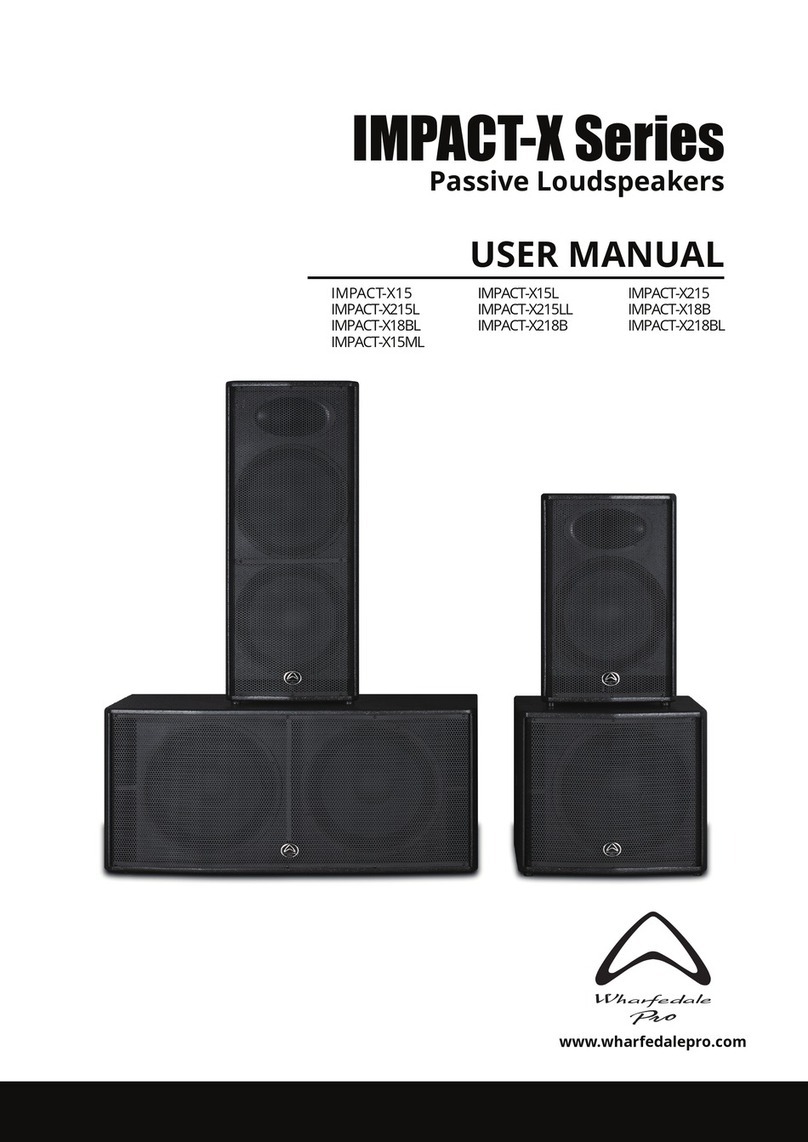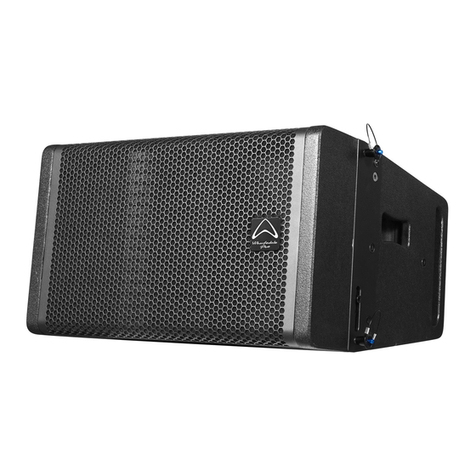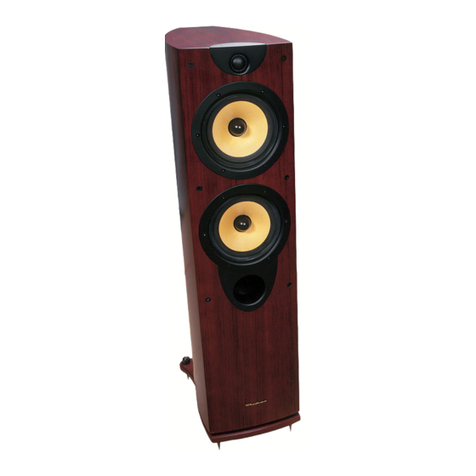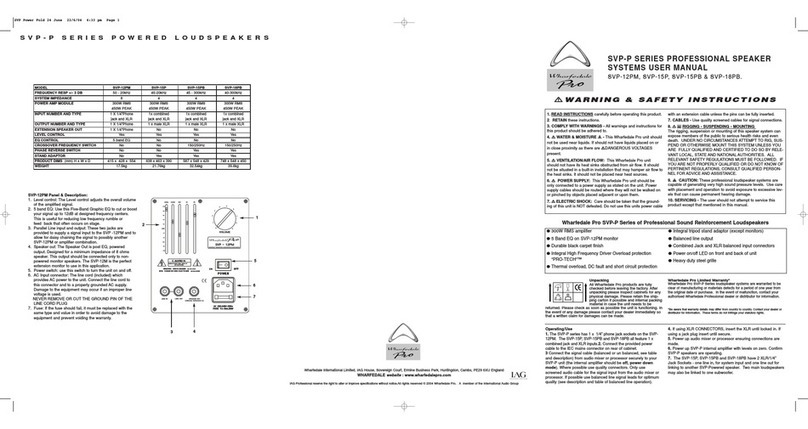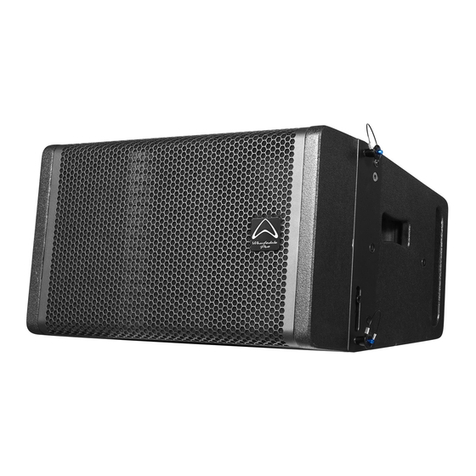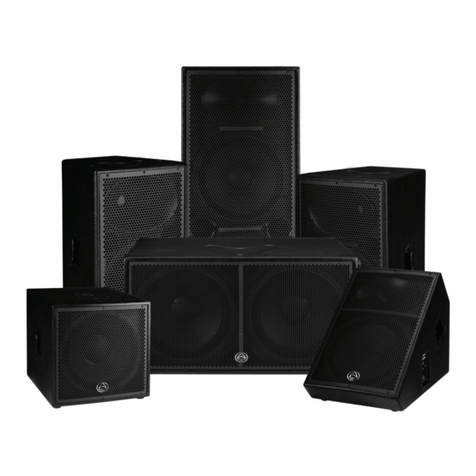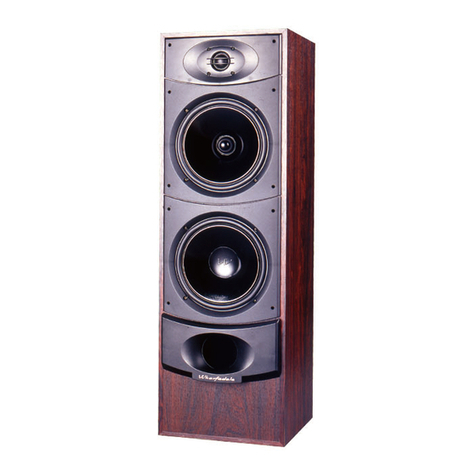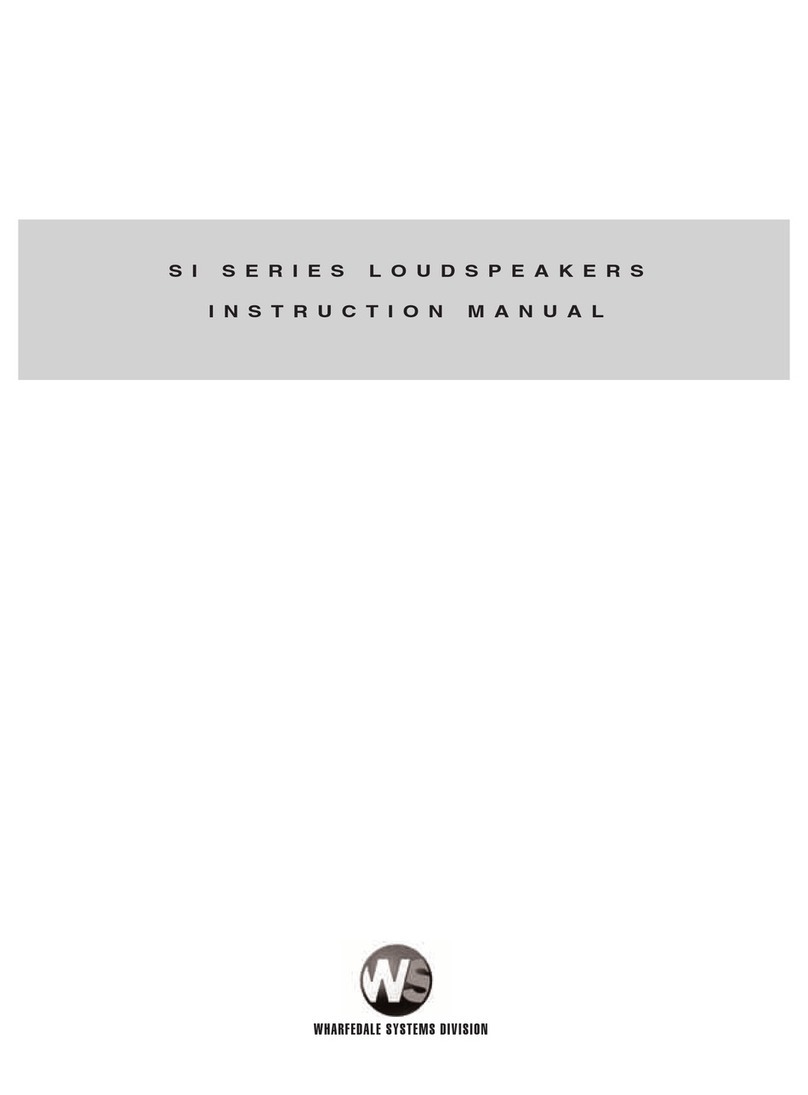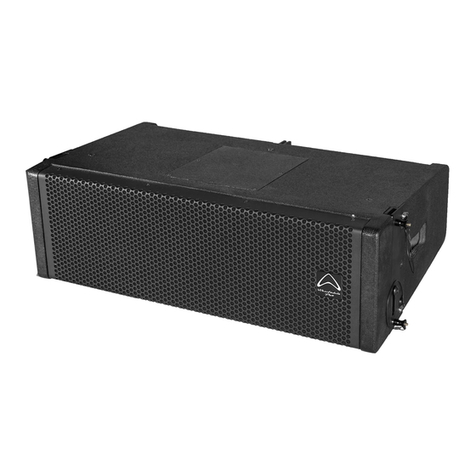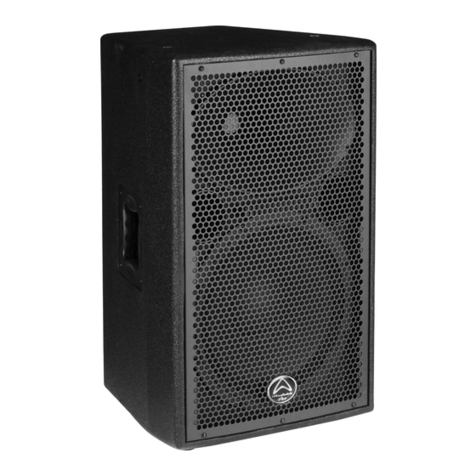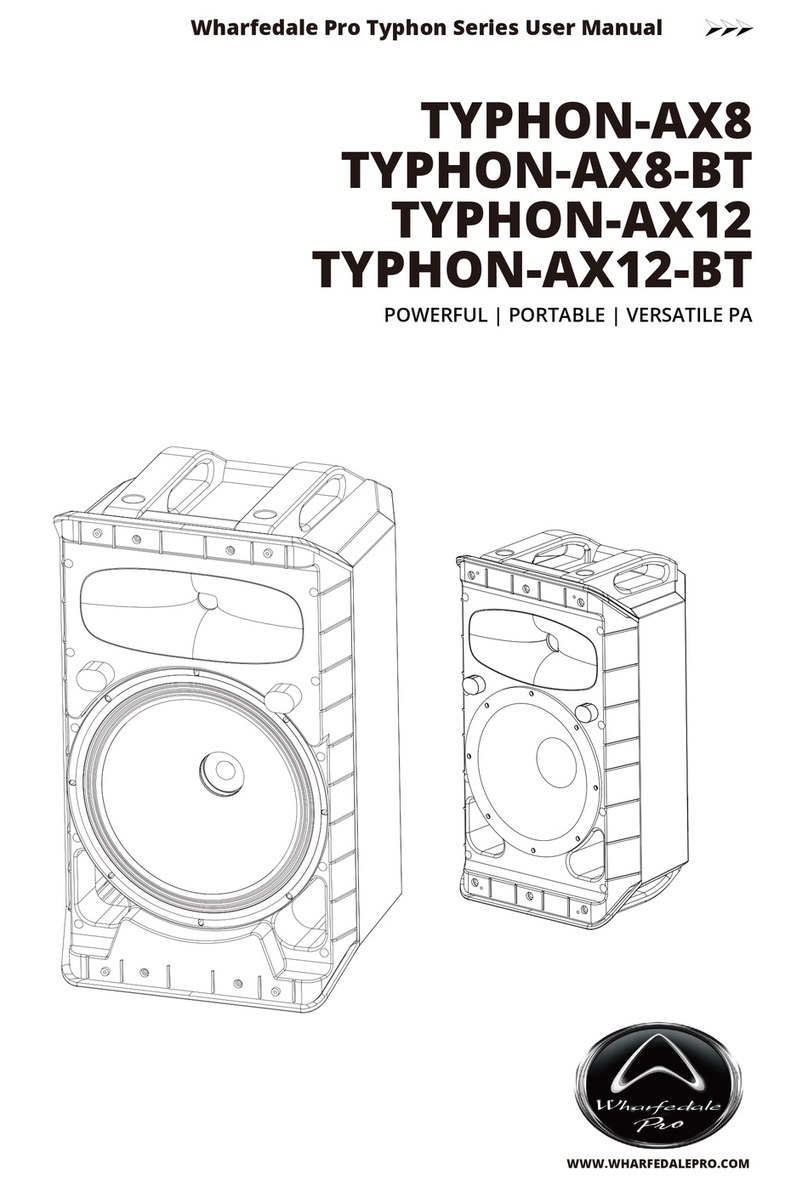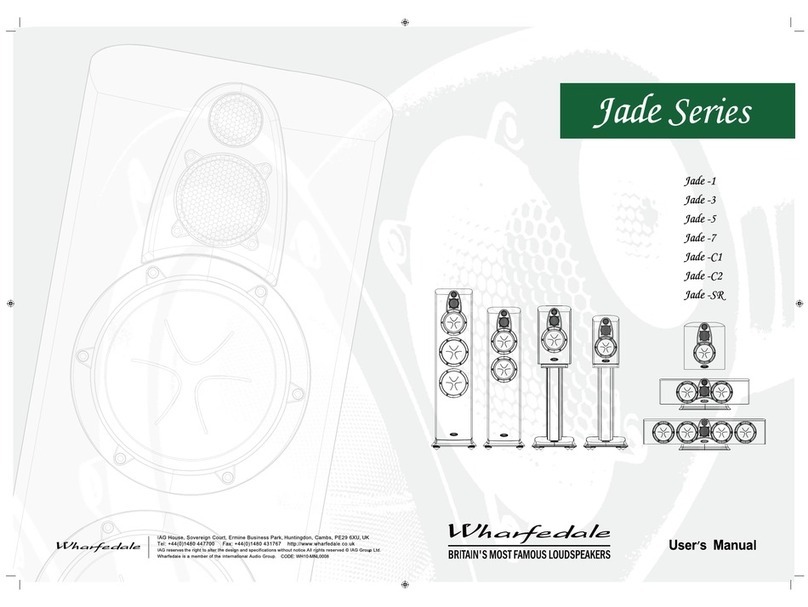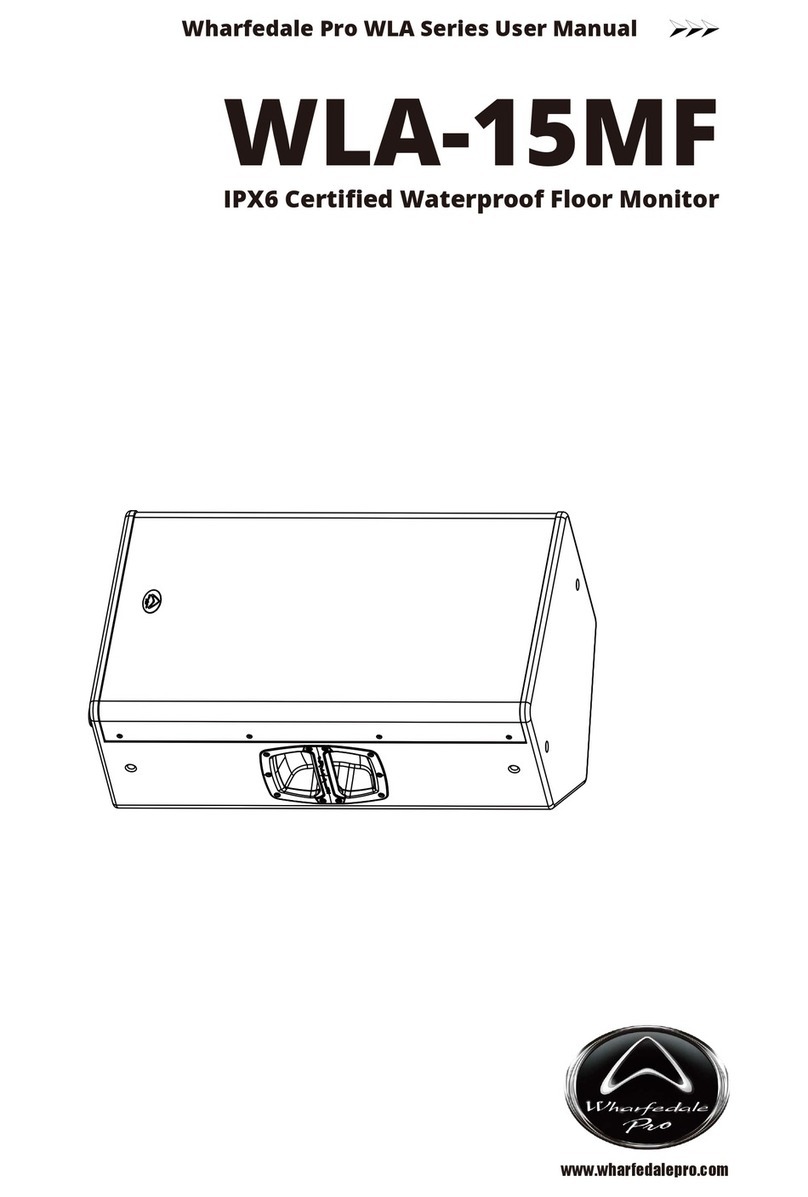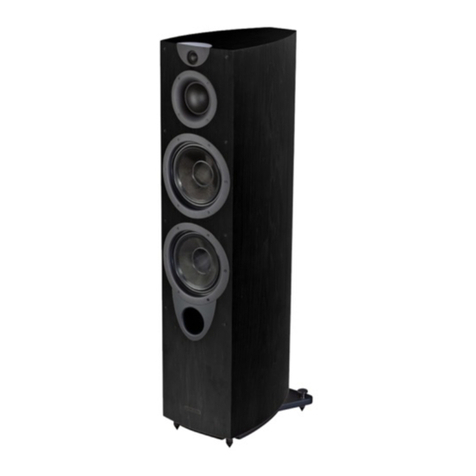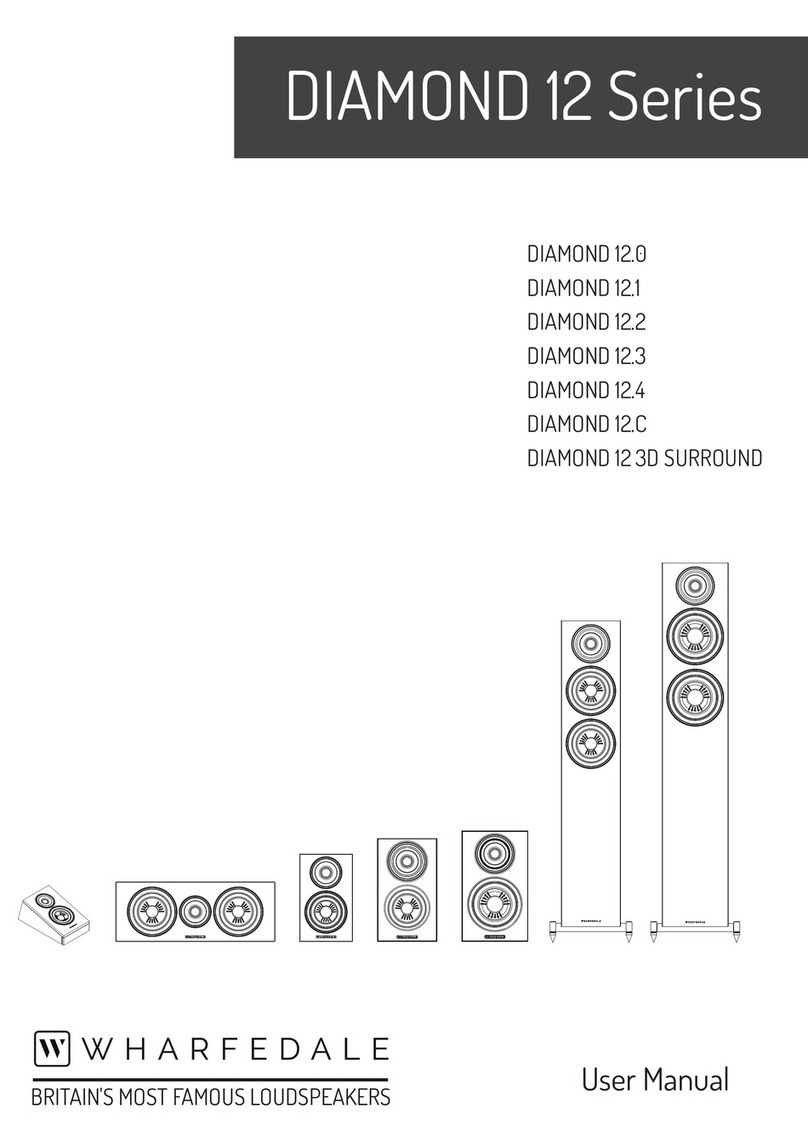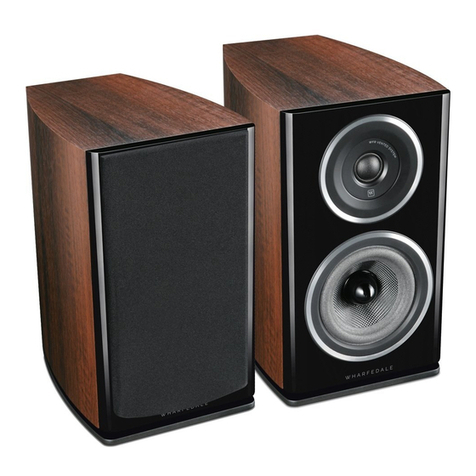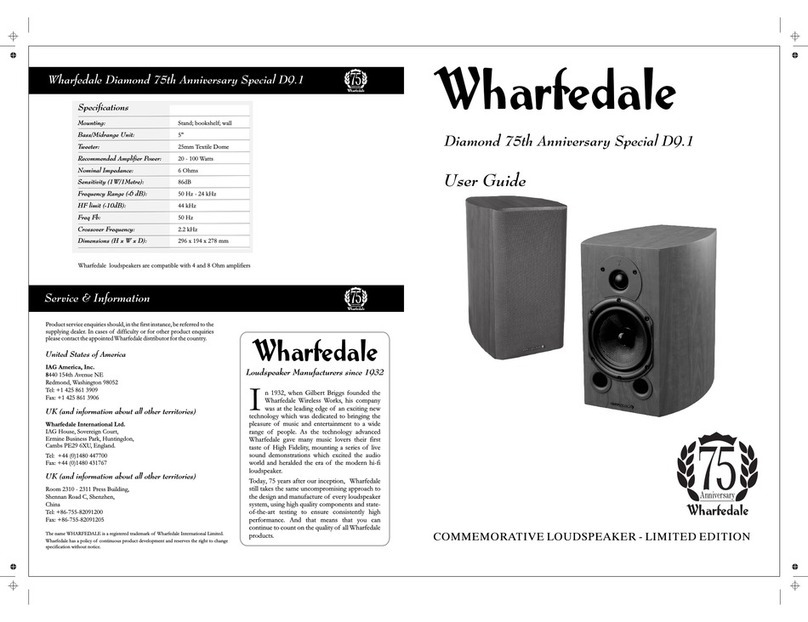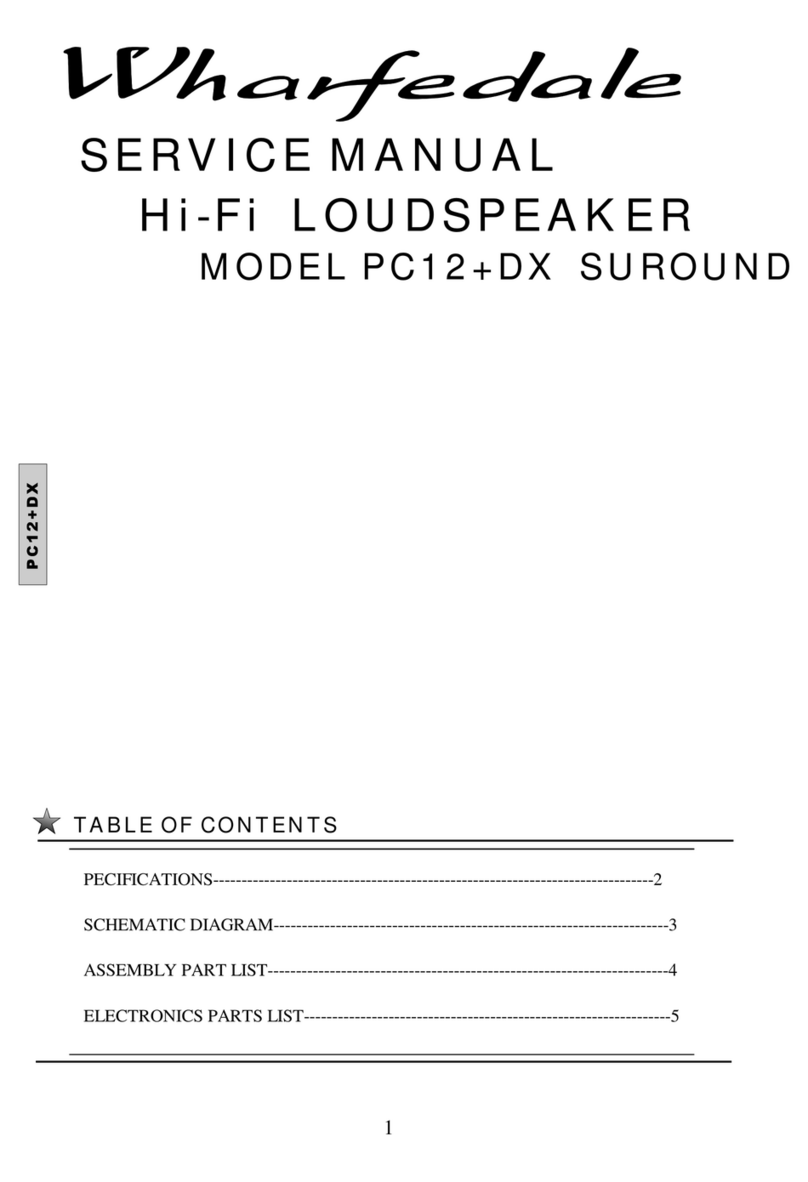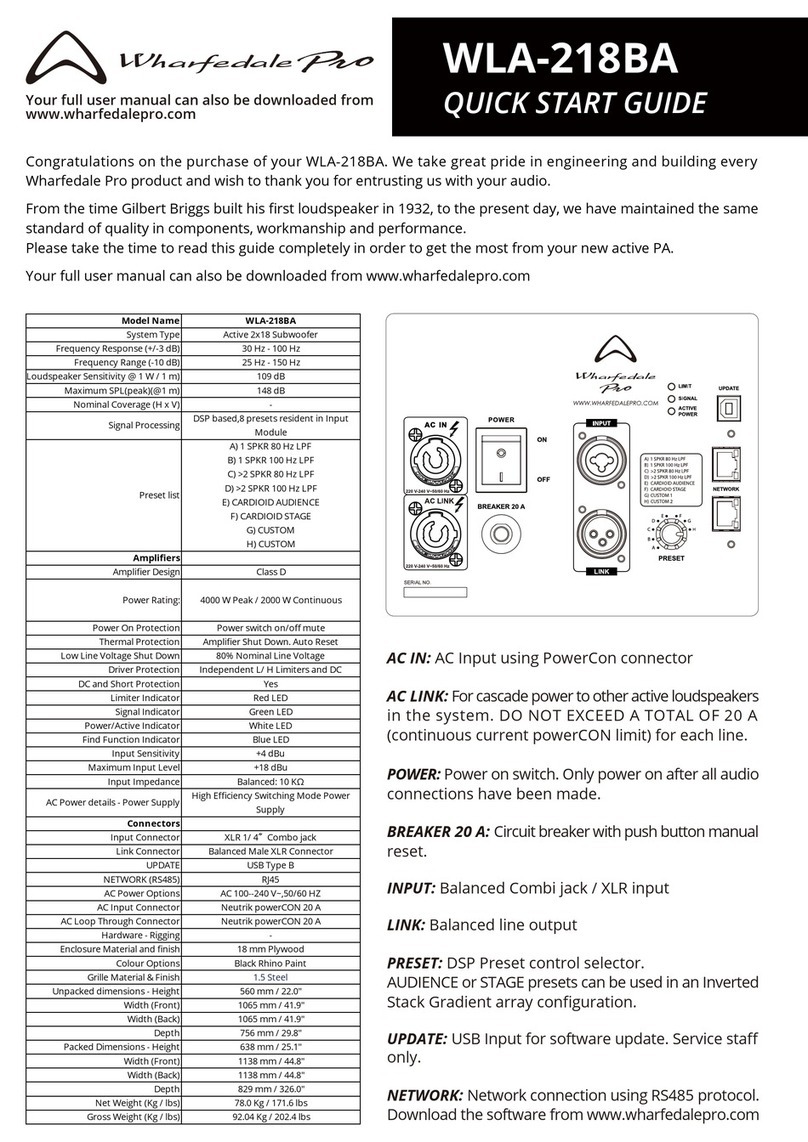Wharfedale Diamond 8.1 Pro, 8.2 Pro and Pro-A tive Near Field Referen e Monitors
The fun tion of a Referen e Monitor Loudspeaker System is to provide an a urate soni
referen e for the operator/engineer thus enabling value de isions to be made in the re ording
and mixing pro ess. The purpose of these devi es is not simply to sound ex iting, or
impressive - only to give an a urate and lean representation of the original sour es and
re ording devi es used. This must be done with the minimum destru tive intera tion with the
room and onsistently in a variety of environments. It is also essential that the Referen e
Monitor does not favor or exaggerate any part of the spe trum, but gives the engineer a
referen e for the real-world environment in whi h the program will be played and heard by the
general publi .
Using your Referen e Monitor
The Diamond Pro and Pro-A tive Near Field Referen e Monitor Loudspeaker Systems are
a urate, low distortion, high quality, self amplified (Pro-A tive version only) loudspeaker
systems designed and optimized for re ording and referen e monitoring. In this appli ation
quantitative and qualitative de isions are made by the operator based upon many fa tors, all
dependant on what is heard from the loudspeaker used as a monitor. For a urate de isions
to be made at the time of re ording in su h areas as mi rophone hoi e, position, level and
ambient spa e-positioning, and at mix-down, for level, eq, effe ts and spa ial pla ement, the
engineer must have referen e sour e loudspeakers that are smooth and neutral, image
a urately, have as low distortion as possible, and dynami stability throughout the operating
envelope.
The Diamond Pro and Pro-A tive are designed understanding all these requirements, and
perform ex eptionally well in all aspe ts. You are en ouraged to listen to favorite program
materials and to ompare the quality and balan e to your urrent monitors. Mix down from
re ordings you have already made and listen to the results on the Diamonds as well as in your
ar, or on your home stereo system. It is important that an understanding of the entire
re ording pro ess is gained through referen e to these monitors and how the results of
re ording and mixing on these work in the “real world.” We are onfident you will find these
speakers not only revealing and transparent, but musi al and involving. We hope through their
revealing nature they will en ourage more analyti al thought in the hoi e and pla ement of
mi rophones and the set-up and mapping and spatial hara ter of your mix. This is true both
for two hannel (stereo) as it is in mixing for 5.1 multi- hannel appli ations.
Use of a subwoofer
Where possible it is strongly re ommended that monitoring and mixing is done on a full range
speaker, if possible, without the use of a sub woofer. Some aution must be exer ised
however. Full range, means overing the whole audible frequen y spe trum. Nominally this is
a epted as being 20-20kHz. Your Diamond referen e monitors, whilst giving an unusually
extended low frequen y response, do not go down to 20Hz. A properly installed, appropriately
rossed over and well performing sub an be very valuable in the mixing and dubbing pro ess.
The proper set-up of a sub woofer and bass management in general is not a simple pro ess.
Anomalies in the monitoring system tend to turn up as the inverse in the mix. Pla ement is
riti al. Given the bass management is done properly and the main speakers are set-up well,
a subwoofer pla ed randomly in a ontrol room ould ause major problems. For example, the
engineer ould be sitting at a low frequen y “null” or hole in the response. Sub woofers oper-
ating at 50Hz or lower are generating very long wavelengths. For example, at 40 Hz, the
1
